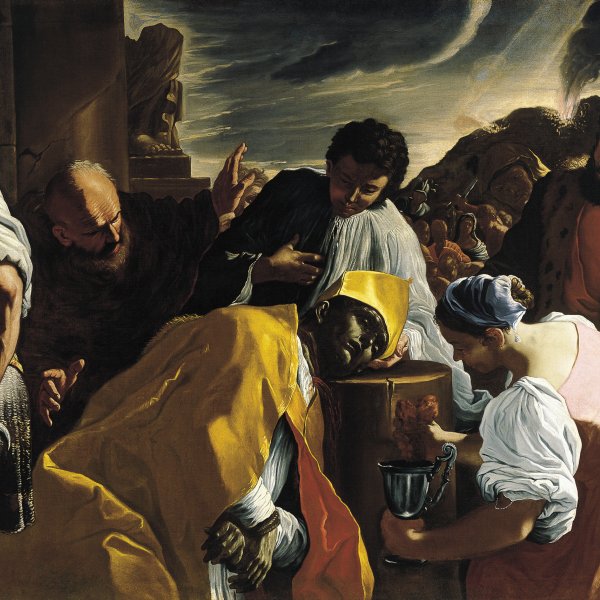Workshop Of Mattia Preti
Taverna, 1613-La Valleta, 1699
Born in Taverna, Preti moved to Rome together with his brother Gregorio in around 1633. During his time there he studied the work of Caravaggio and his Dutch and French followers, and it was during this early period that he painted his depictions of card players and musicians. At the end of the 1630s Preti looked to the Neo-Venetian trend, the paintings of the classicists such as Lanfranco and Guercino, and the work of the Venetian painters Titian, Tintoretto and Veronese. In Rome he produced one of his masterpieces in the fresco painted in the church of Sant'Andrea della Valle between 1650 and 1651 depicting The Martyrdom of Saint Andrew. These, together with the frescoes of Modena, representing The Evangelists and Paradise, are examples of his mature style. Between 1656 and 1660 Preti was in Naples where his painting evolved towards a different approach to lighting and a cooler range of colours. His work in Naples was to be an important source of inspiration for Neapolitan painters of the next generations. In addition to the numerous easel paintings he executed in Naples, Preti also decorated the church of San Pietro a Maiella with scenes from the life of Saint Peter Celestino and Saint Catherine of Alexandria, dated between 1657 and1659. After a brief sojourn in Rome where he took part in the decoration of a room in the Palazzo Pamphili in Valmontone, he moved to Malta permanently in 1661 where he continued his activities. His most ambitious work there was the renovation of the decoration of the church of Saint John of Valetta with scenes of the life of this Saint.





